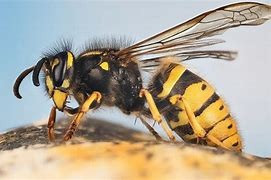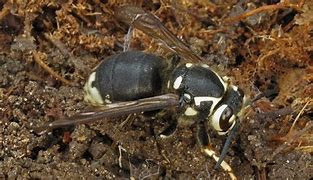Yellow jacket, any of 35–40 species (genus Dolichovespula or Vespula) of social wasps, principally of the Northern Hemisphere. Despite the common name yellow jacket—which is used in reference to the typical coloration of the abdomen, with yellow and black markings—some species are white and black, and others are marked with red. Yellow jackets differ from other wasps in having their wings folded longitudinally when at rest. Dolichovespula species typically build exposed nests. Vespula species build concealed nests underground or in protected cavities; when a nest is stepped on, the colony may erupt in an angry, stinging swarm. Nest size varies widely; some nests can be held in one hand, whereas nests in warmer climates may weigh half a ton.
FOREST EDGE WILDLIFE CONTROL *** 413-695-0606 ***


YELLOW JACKET
BALD FACED HORNET
The baldfaced hornet is an 'aerial yellowjacket' - one of 7 or 8 species in the genus Dolichovespula in North America. However, it is not a 'true' hornet - it is a yellowjacket. The only hornet in North America is the European hornet, Vespa crabro, and it is an accidentally introduced species. All of the yellowjackets in the genus Dolichovespula build nests in bushes and trees (sometimes on the outside of buildings), and produce the characteristic football shaped, grey papery nests.
Fertilized queens that have survived the winter in sheltered places, such as hollow trees, rock piles, under bark or in the walls and attics of buildings, emerge in the spring and start to build a nest. They gather cellulose from weathered and rotting wood, chew it with their saliva, and make a papery material to construct the nest. They create a few brood cells inside the nest, lay eggs in them, and feed the larvae when they hatch. The first brood will take over the tasks of nest building, food collection, larval feeding and nest protection. The colony grows throughout the summer until it has 100 to 400 workers. In New York, a large colony can have more than 300 individuals.
-
The nests are typically found in bushes and shrubs that are at least three feet above the ground, or in trees that can be as tall as 60 feet or more. Sometimes, they are also located under the eaves of buildings and other sheltered places made by humans. The nests have a grey color and can grow up to 24 inches high and 18 inches wide in New York.